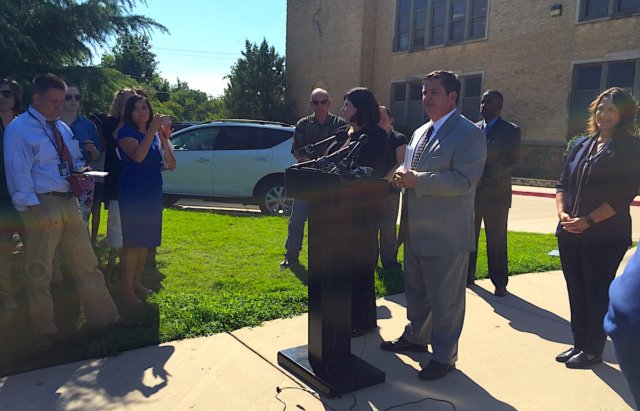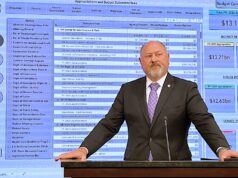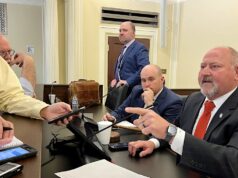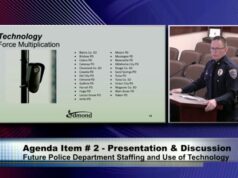
The Oklahoma City Public Schools on Monday voted to “… begin research for a possible lawsuit or lawsuits …” against the state. The OKCPS is likely to argue that Oklahoma school funding is insufficient to the point where it violates the Constitution. To that effect, the Oklahoma Constitution states:
The Legislature shall establish and maintain a system of free public schools wherein all the children of the State may be educated.
Prior to OKCPS’s official announcement, The Oklahoman predicted in an editorial on Sunday that OKCPS’s efforts would be “… a waste of time and resources” based on a 2007 state Supreme Court ruling against the Oklahoma Education Association’s “adequacy” suit. Contrary to The Oklahoman’s editorial, plenty has changed since 2007.
Mandates create haunting legacy
From 2007 to 2016, Oklahoma state funding has been cut by 27 percent, more than any other state — but that is only half the story. During the same period, the state has also imposed unfunded or underfunded mandates that cost the district money and the finite energy of educators. The Oklahoma Supreme Court should consider the full costs of the subsequently enacted Reading Sufficiency Act (RSA); the remediation required by the graduation law, which requires students to pass five end-of-instruction (EOI) tests to earn a diploma; and the Oklahoma Teacher and Leader Effectiveness Evaluation System (TLE).
It does not matter whether those were good or bad policies, and it doesn’t completely matter if parts of the laws have changed. The OKCPS still had to direct financial and human resources toward meeting those mandates, and the legacies of robbing Peter to pay Paul in those years still haunt us.
Ripple effects of RSA, EOI and TLE
Included in the costs of the RSA must be the training of administrators and teachers as well as extra services and the cost of retaining third-graders who failed a state reading test. Moreover, since a much higher percentage of OKCPS third-graders need extra services, the costs of the RSA hit the district disproportionately.
I suspect that the biggest costs, by far, were the investments in tutoring and remediation of students, such as “EOI boot camps” for kids who failed year-end exams. Had those investments not been made, the dropout rate would have increased multifold. Because the pass rates on EOIs are much lower in the inner city, the costs of the graduation law also hit the OKCPS asymmetrically.
In terms of the TLE, it wasn’t just the extra costs of professional development and multiple classroom observations; the costs included the investment in computer systems for the (now terminated) quantitative portion of the law.
Court should also consider demographics
In addition to the economic ramifications, the Supreme Court should ask whether these cuts disproportionately hurt poor children of color and kids with serious education disabilities (SEDs). Since urban districts like the OKCPS serve impoverished racial minorities and special education (IEP) students at a higher rate than most of the state, there is a civil rights dimension to the potential case.
Data such as Free and Reduced Lunch participation, as well as the blunt statistics on the percentage of IEP students, are largely meaningless. Instead, concentrations of generational and extreme poverty (as opposed to low-income, which is 170 percent of the poverty rate, or situational poverty) and concentrations of students who have endured extreme trauma and come from neighborhoods with low levels of situational trust and social capital create a bedrock of challenges.
The percentages of kids with learning disabilities or mental and physical illness are fairly evenly spread across society; however, the percentages of students in urban classrooms that have sets of severe disabilities (not just an IEP) are not.
Again, the arguments for or against these policy mandates are irrelevant to the question of whether they impose extra hardships on the OKCPS. These problems are intertwined with segregation and choice.
OKCPS faces specific challenges
The OKCPS is in the middle of a major metropolitan area of more than a million people. Oklahoma County has 15 school districts as well as magnet and charter schools. The proliferation of choice has left the poorest OKCPS neighborhood schools with large percentages of kids whose cognitive processes have been physically altered through enduring multiple adverse childhood experiences (ACEs).
It is harder to teach and more expensive to run schools when classrooms include a critical mass of kids who don’t control their behavior because they can’t control their behavior. Suburban and choice schools accept and retain as many of those students as they can handle. The OKCPS accepts them all.
Consider the context in which funding has been cut
All of the above factors have drained educators (and students) of their energy, making it harder to retain teachers. In turn, teacher flight increased the numbers of families exercising their choices in terms of suburban and charter schools, leaving behind schools with even greater percentages of students who are more expensive to educate because of the concentrations of extreme poverty and victims of trauma.
This is the ground-level context: As these downward cycles continued from the mid-2000s on, the state has cut spending dramatically while also imposing expensive and challenging new mandates. Whether the RSA, the graduation law, the TLE and other policies were the greatest things since sliced bread, ill-conceived mandates or something in between, they all had direct, indirect and opportunity costs.
While The Oklahoman’s editorial board may be willing to ignore the obvious damage done to Oklahoma City students and educators, the Oklahoma Supreme Court should consider the full story. In which case, the OKCPS could win a much-needed victory.





















